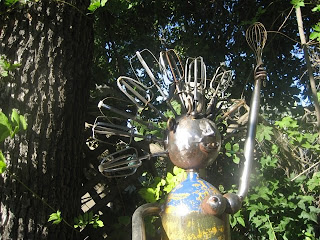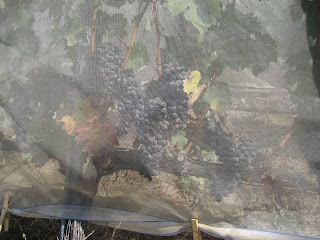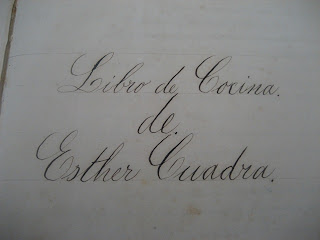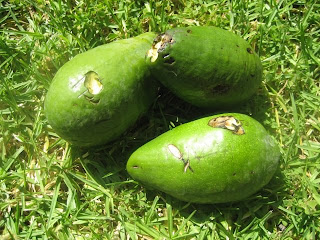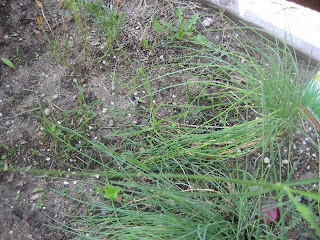Andy and I bought a cheese making kit yesterday and spent this evening fashioning our inaugural cheese, a farmhouse cheddar.
As we worked, Cosmo and Blaze both danced around under our feet and paraded about the kitchen, meowing their admiration for shared milk and milk products. They got samples all along, just like we did. As the curds cooked slowly in their water bath–which is pretty tricky for a beginner to manipulate properly–Andy gently broke them up so they didn’t turn into an unruly mass. (In case you’re wondering, the apron says, “Don’t make me poison your food.” We don’t tend to wear that one when we have company over for dinner.)
As the curds cooked slowly in their water bath–which is pretty tricky for a beginner to manipulate properly–Andy gently broke them up so they didn’t turn into an unruly mass. (In case you’re wondering, the apron says, “Don’t make me poison your food.” We don’t tend to wear that one when we have company over for dinner.)
 Ladling the curds into the cheesecloth for draining. After all these years of using cheesecloth, it’s cool finally getting the chance to use it for the purpose for which it was originally created!
Ladling the curds into the cheesecloth for draining. After all these years of using cheesecloth, it’s cool finally getting the chance to use it for the purpose for which it was originally created!
 Draining the curds to get rid of the extra whey–which we will use to make ricotta. It’s great getting a second cheese from this enterprise.
Draining the curds to get rid of the extra whey–which we will use to make ricotta. It’s great getting a second cheese from this enterprise.
 Mixing fine salt into the curds. If you’re a seasoned cheese maker, you’ll note that these curds are too small. Beginner’s mistake–we let the water bath get too warm too fast. We’ll see if this affects either flavor or texture in the long run.
Mixing fine salt into the curds. If you’re a seasoned cheese maker, you’ll note that these curds are too small. Beginner’s mistake–we let the water bath get too warm too fast. We’ll see if this affects either flavor or texture in the long run.
 The curds in their mold rest under 20 pounds of pressure–actually, a little more. Yes, those are hand weights and a can of tomatoes. It’s smart to use what you have on hand before investing in a proper cheese press, just in case you discover you really don’t enjoy making cheese.
The curds in their mold rest under 20 pounds of pressure–actually, a little more. Yes, those are hand weights and a can of tomatoes. It’s smart to use what you have on hand before investing in a proper cheese press, just in case you discover you really don’t enjoy making cheese.
While the future-cheddar did its initial draining, we simmered the remaining whey, skimmed the second batch of curds and made ricotta from that. The first taste told us it would be great for breakfast, so we mixed in some sugar seasoned with vanilla, cinnamon and cardamom and popped it into the fridge.
Of course, we dirtied up every implement in the kitchen and got in each other’s way and probably did at least a dozen things in the least efficient way possible, but that’s okay. This is our foray into cheese making. The more you do anything, the better you get at it. And we both feel like this is something we’ll want to do again and again and again . . . So eventually, we’ll streamline the operation and–we hope–begin producing cheese like pros.
As the mass of curds sits beneath its homemade press overnight, we keep sneaking peeks at it, resting securely in the laundry room, so the cats can’t get at it. It’s like a first time bread baker admiring the dough as it rises.
Ah, there’s such wisdom to be gleaned from The Life of Brian. Andy and I do feel blessed to be trying something new, that promises to yield a tasty and rewarding product in the end. And we feel blessed to be having a good time working on this project together. Yes indeed, blessed are the cheese makers!




